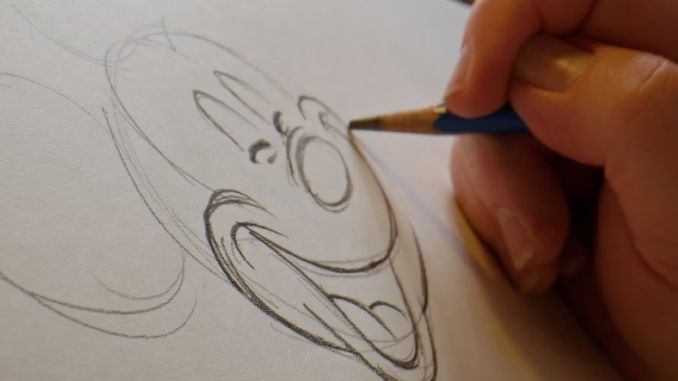Disney Bravely Writes Its Own Flattering History in Mickey: The Story of a Mouse

In our current cultural landscape, it can be difficult to divorce the character of Mickey Mouse from the far-reaching media conglomerate that is The Walt Disney Company. The character’s reedy, falsetto voice and simplistic three-circle silhouette often conjure reminders of Disney’s corporate dealings: Pixar, Marvel, Lucasfilm, ESPN, 21st Century Fox, amusement parks, cruises, merchandise—everything but cartoons. Nevertheless, as Disney+’s newest documentary Mickey: The Story of a Mouse works diligently to remind us, Mickey does, in fact, have humble beginnings in animation and has evolved over the course of his nearly 100-year journey to become the icon he is today.
Mickey: The Story of a Mouse starts at the very beginning of this tumultuous journey. Before the power, before the fame, when Mickey’s illustrious creator was merely a “dirt poor” farm boy using a sketchbook to dream up fantasy and wonder from his modest Missouri surroundings. As the first act continues, we hear of Walt Disney’s misfortune with Oswald the Lucky Rabbit, an early creation that the mogul lost control of in 1928, and how a new star blossomed from this low point in his career. The film tells the story of a fateful train ride from Manhattan to Hollywood, where Disney, gutted by the news that rights for Oswald did not belong to him, decided to create a cartoon character that he could call his own. And so it was, out of this moment of immense loss and frustration, that Mickey Mouse was born on pencil and paper. Although the film briefly acknowledges that Ub Iwerks, Disney’s best friend and a lead animator of early Mickey cartoons, has a very different recollection of these events (one where Iwerks co-created and designed Mickey with Walt after his return from Manhattan), director Jeff Malmberg decides to champion Walt’s epic account.
The film enlists the expertise of Disney/religion scholar Dr. Jennifer Porter to cement this version. “Does it matter if Mickey was created on a train or at an animator’s desk?” she asks. “What matters is that hope-from-despair story that we can all resonate with and go, ‘… I gotta pick myself back up by my bootstraps and keep going, because if Walt can do it, I can do it.’” It’s at this moment, when the film glazes over its subject’s origin story in favor of the grander account, where Mickey establishes its bias for seductive American mythmaking over the pursuit of objectivity or historical accuracy.
From here, the film is constructed as half Mickey timeline—going through the decades to detail works like Fantasia all the way to new 2022 short Mickey in a Minute—and half sweeping statements about how the character is a symbol of America, “innocence” and “hope.” What’s off-putting about the latter commentary isn’t that it’s necessarily wrong, but that its persistence throughout the film feels spoon-fed when so much of the character’s history allows for viewers to come to these conclusions organically. The documentary doesn’t need experts to spell out the character’s greatness for us in sit-down interviews when his magnetism jumps from the pages of the artwork itself.
That said, the film is strongest when zeroing in on the artistry and talent behind the iconic mascot. Mickey’s bread and butter is its extraordinary archival access to some of the character’s most pivotal artistic depictions. Malmberg gets us up close and personal with original sketch work from Steamboat Willie, Brave Little Tailor and other early cartoons. These simple, pencil-on-paper sketches, combined with the insight and passion of Mickey’s current-day illustrators, allow us to understand the character’s original essence. The Mickey in a Minute short in particular, which acts as a wrap-around for the documentary, is particularly suited for stirring up great appreciation for the character’s unique movement and subtle design changes through the years. Through the screening of the short, and footage of its creation, we not only get a great history on Mickey’s illustration, but the artistic process itself, straight from the mouths of lead illustrators Eric Goldberg, Mark Henn and Randy Haycock. We are allowed to follow the cartoon from sketch room to ink room to screening room—and it feels truly magical.
-

-

-

-

-

-

-

-

-

-

-

-

-

-

-

-

-

-

-

-

-

-

-

-

-

-

-

-

-

-

-

-

-

-

-

-

-

-

-

-








































